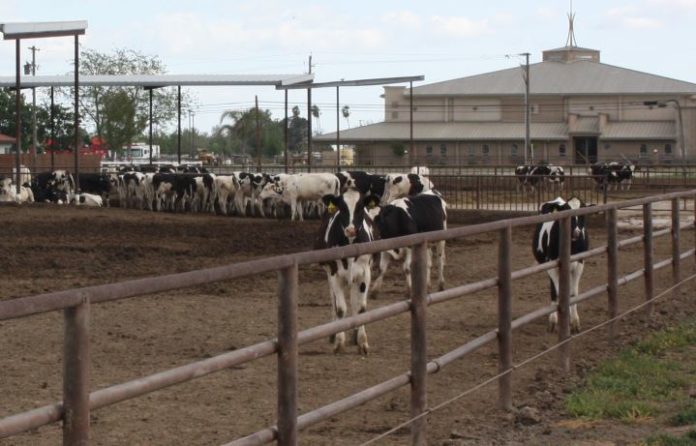The Tulare Irrigation District held its board of directors meeting on Tuesday, December 13, 2022 at its often fog shrouded headquarters west of Highway 99 in Tulare County. I shudder to tell you this but there was some problem with my beloved Zoom. I might not love Zoom so much if I found out more, like it’s run by a communist country west of Japan and south of Russia that I won’t mention by name because it’s racist to do so.
I was hanging with Wilson Orvis after the Friant meetings and we were talking about musicians we like. We both like Steve Earle. Great, innovative song writer but he’s a recovering heroin addict who did some prison time. Fair enough. He paid a price and learned. I have respect for all of the Lord’s lambs who kick an addicting habit. But did a little deeper and you find out Earle is an avowed Marxist. Boogers. I didn’t run out and burn all my Steve Earle CDs, I mean after all it’s not like it was revealed Earle shops at Target and watches Disney +. Orvis told me his dad warned him to be careful about celebrities and others so maybe for a very short time I’ll just let things roll. But come first of the year we’re going to get to the bottom of a few things.
The Meeting
President David Bixler called the meeting to order at 9:09am and the first act was to sewar in the board for the coming year. Board member Mike Thomas swore an oath, the same oath as all elected officials, to protect and defend the Constitution. Director Dave Martin would have sworn also but he wasn’t able to attend today’s meeting.
By now it was about a quarter after and the kit and caboodle of honyockers went into closed session. There were 10 items on the agenda for closed session and General Manager Aaron Fukuda said they’d be back in about 15-minutes. That gave me time to look up “kit and caboodle” and honyocker to make sure I wasn’t writing something I wouldn’t say out loud in Sunday School. Turns out kit and caboodle meant what I thought – aggregate possessions. Honyocker was a little different as the Word dictionary put a squiggly red line underneath it. I did use it correctly and it is not a pejorative term, anymore. At one time it was synonymous with sod buster. The cattlemen of the Great Planes weren’t always happy to see farming introduced and they referred to the often immigrant agronomists as honyockers. Now you can call anyone a honyocker without insulting them.
Let’s Try Again
Forty-five minutes after going into closed session for 15-minutes the board came back online. When the audio and video came back on there was a discussion about burl. Someone took out an orchard and found $750,000 worth of stump wood. Mercedes Benz bought it. Evidently burls are caused by some kind of virus at the bottom of the trunk where it transitions into roots. That had to be a pleasant surprise for the landowner.
Someone took out an orchard and found $750,000 worth of stump wood. Mercedes Benz bought it. Evidently burls are caused by some kind of virus at the bottom of the trunk where it transitions into roots. That had to be a pleasant surprise for the landowner.
The board adopted a resolution to meet online. Then Fukuda introduced Dianne Zegarra as a new member of the TID team as assistant water resources director. Zegarra, hope I’m spelling her name correctly, is formerly with the Greater Kaweah Groundwater Sustainability Agency. She’s also a member of California Women for Ag and I can tell you with a straight face that group gets things done. Good for her and good for TID. The minutes were approved.
Water Report
Water Master Marco Crenshaw said there has been snow and a good deal of it. He doesn’t expect any flood releases from Lake Kaweah because the temperatures have been low so there isn’t much run off. Millerton Lake is experiencing a similar situation. There is nothing forecast for the next 10-days. Once again we’re starting strong and if the trend continues this will be a good water year. If not, if we don’t have more storms, well, it’s going to be rough. Crenshaw showed maps of the Pacific Blob. The warm water mass has moved into the Gulf of Alaska. I guess that’s as good as hog spleen.
Crenshaw showed TID having, I think about 20,000 a/f in storage between the San Joaquin and the Kaweah River yields so far. Fukuda said there is an ASO flight scheduled next month. Director Rick Borges said the Kaweah Delta Water Conservation District’s work on the Hannah Ranch Recharge Project has more impact that even the Army Corps of Engineers’ operations of the Kaweah Dam. The recharge project is on the way and of the stream and there is a lot of work to be done. Crenshaw said he believes there is enough time for Kaweah Delta to get wrapped up. Fukuda said Rick Stone owner of a cloud seeding business explained the benefits of that task at the last Kaweah Delta WCD meeting.
Fukuda said the rain brings hope but he showed a chart of reservoirs around the state. They are all on the low side but for Millerton Lake. He said with the situation on the Colorado River is dire and even the Mississippi River has flows so low some ships are running aground. So it could be worse here.
Groundwater Report
Fukuda said there some returns on the recharge strategy in TID but the overall trend is with groundwater levels getting deeper, there is a drought going on. However, the rate of the levels receding is slowing by 50 percent or more.
O&M Report
Superintendent Wayne Fox said more than half the district has been sprayed with a preemergent. They stopped due to the rain but the crew is back at it now that the sun is out. All the pins in the backhoe have been replaced, I think he said it cost $5,000 even though it was done at the district’s shop. There has been a retirement on his crew so they’re going to need a replacement hired.
Treasurer’s Report
Kathi Artis gave her report and if she said what I think she did TID made about $4 million so far this year. Not sure how much they spent. I did notice they’ve made $211 from the sales of Richard Zack’s excellent book Quest for Water, which is a history of TID. There was a photo of a dump truck driving along a portion of the Friant Kern Canal repairs put on screen to provide a good visual scale representation of how much the canal has sunk. Which also shows how the money charged to TID is being used. That’s why a photo of dump truck appeared in the midst of the financial report.
From what else I could tell looking at the expense report slides Artis has been taking good care of the books and the district is still afloat financially if not liquidly.
Engineering Report
Jeremy Barroll gave his report saying the district and Self Help Enterprises have found a common solution to a driveway running over a TID pipe will work as long as the Help crew doesn’t try to plant landscaping. Barroll had several other projects where the City of Tulare is expanding development into previously agricultural land and infrastructure has to be dealt with.
Management Reports
Fukuda first talked about a new Kaweah Subbasin Data Management System. There needs to be adjustments to the current model because it doesn’t take into account subsidence. There is Round Two Grant application due this Friday. You may have noticed before the election California had a $90 billion surplus it was ready to spend like crazy. Now it looks like once the votes have been counted the state is in a $26 billion deficit.*
The Mid Kaweah GSA has proposal for TID. Landowners who farm along the TID boundaries may sign up to get extra surface water if available. As I understand it this land could pay an assessment but it would not be an annexation. TID will also work cooperatively to allow groundwater credits to between the MKGSA, the Greater Kaweah GSA and the East Kaweah GSA. The landowner would be responsible for any and all upgrades to the TID system needed to move the water. There was no enthusiasm from the TID board for any water to leave the Subbasin.
Fukuda said this is the back of the napkin plan. He’ll be bringing a more fleshed out version to the board as it is developed. He did say sooner rather than later something along these lines needs to be dealt with.
James Fisher reported to the board it is time to start billing for the MKGSA. They’ve learned a lot and taking many different variables into account it looks like about $2.7 million could be coming in. The white areas are paying more than the surface water delivery areas, which is no surprise. Fisher said invoices are going out next week. An effort has been made to mimic the TID invoice in look and lay out. He put up a mock invoice to Faky Fakerton. Poor guy owed either $3 million or maybe $3,000 or so. The amount just caught the corner of my eye before changing slides. Anyway, merry Christmas to Faky and his fake family when they have to pay that fake bill with their fake money. It’s due in real February.
Fukuda also gave real praise to Fisher for his work in bringing this about. He also said Crenshaw’s input and help was invaluable. He said there is a group formed to bring in more surface water to the Kaweah Subbasin and is looking to drop $750k. He said there were some connections made at the recent ACWA conference but it sounded like his hopes for $500 per acre foot may be dashed. He said the walnut growers are looking at a tough time. Evidently China has planted a gob of trees and that exports to that country will soon dry up. Folks are looking at pivoting to corn.
Friant Report
Next Fukuda reported Jim Erickson is the new Chair of the Friant Water Authority and TID’s Borges is Vice Chair. Good for them. The big subject to come out of the last month’s retreat was what else does the Friant Kern Canal need beyond the subsidence correction. These needs are referred to as Phase II.
Fukuda said Friant asked the CVP contractors to come up with a realistic water demand so some new math might be applied. He said the amount of open channel friction, known as N value was wrong when they first designed the canal. N value is the drag on the water the texture of the concrete walls and bottom exert on the flow.
I shall digress for a bit. Cement was invented by the Romans. It is a mixture of limestone, clay and other materials. It’s ground up, heated up and turned into a very fine binding powder. You mix cement with sand, aggregate or smaller rocks and gravel with water and stir to get concrete. Different chemicals are added to the cement to prolong or shorten the drying or curing time. Slump is a consideration. If you’re pouring a panel on the Friant Kern Canal there is a significant slope. The lower the slump, literally how far a blob of wet concrete slumps, the runnier the mix. A slump for a pour the angle of the FKC panels is likely two inches. If the slump is too low the concrete would just run down to the bottom of the canal. Other considerations include the finish. As concrete cures it needs to be vibrated to evenly mix the sand and aggregate. A slurry of mostly cement and water will form at the top of the slap. This is known as cream. A hard trowel finish creates a very smooth surface. A sweat finish is less smooth and you can even sweep a broom across the cream as it sets up to create a textured surface finish for areas that need better traction like a sidewalk. Thanks to my brother David Wright, former journeyman cement mason and now partners at Salem Engineering for the above primer on concrete. If there are any errors you can bet they were mine in relaying the information and not his in telling it to me.
mix the sand and aggregate. A slurry of mostly cement and water will form at the top of the slap. This is known as cream. A hard trowel finish creates a very smooth surface. A sweat finish is less smooth and you can even sweep a broom across the cream as it sets up to create a textured surface finish for areas that need better traction like a sidewalk. Thanks to my brother David Wright, former journeyman cement mason and now partners at Salem Engineering for the above primer on concrete. If there are any errors you can bet they were mine in relaying the information and not his in telling it to me.
So what puzzles me about this is, water flowing over concrete slowly erodes it, smoothing the surface while reducing drag. Maybe the FKC is 60-years old, maybe it would take 120-years’ worth of flows to smooth things out. Someone from Friant or Stantec or someplace let me know what’s really going on and I’ll share it in a future report.
It used be thought if you’d pull the occasional wrecked car or the many, many dozens of shopping carts from the canal you’d restore part of the capacity. (True story, they once pulled an airplane from the Delta Mendota Canal.) This N value way underestimated the amount of friction water flowing through the canal encountered. To get the capacity corrected for the entire canal would require nine or more projects and cost close to one billion dollars. There is value to this but how to get there without bankrupting the small and family farmer is the question. The cost share to TID, if I understand it, is $100 million.
Thomas asked what if TID kicks in all that money and the FKC continues to sink due to subsidence. That’s a real possibility. Fukuda said the low hanging fruit for TID is to coordinate flood releases on the Kaweah River with those on the Friant system.
The funding goes to the beneficiary. In other words if TID doesn’t put up $100 million and someone else does they would get the extra water. However, there is no dedicated capacity and no operational impacts allowed in this bargain. There is no private funding allowed either. A foreign country or private enterprise can’t participate. But what if TID gets an offer from Saudi Arabia and moves that money through TID should Friant know? Borges said it would be nice if this can work out as a Friant family plan. Fukuda said FWA CEO Jason Phillips has come up with funding from the state and feds for the current work being done. That is amazing in itself and points to keeping the momentum moving.
GM Report
Fukuda said he’s only been home 10-days this month. After the Friant retreat he came home, changed clothes and hit the PPIC panel where he spoke about TID and emphasized the need to keep water rights private and not transfer them to the state. What a recipe for disaster that would be.
Next Fukuda went to Indian Wells and spoke to the ag committee at the ACWA conference about fallowing. He also spoke on a panel about leadership of a district. He was up there with districts with hundreds of employees and he has 23 at TID but they listened to him.
Fukuda also was on an ACWA panel about SGMA and the law. He was the only non-lawyer on the panel and he said he heard a compelling argument that in an established water accounting framework, adjudication might be the right direction. Wow, ok. There we go learning something again.
Finally he spoke at the California Foundation on Environment and Economy where he spoke about more surface storage and the Seaborn project. He said ACWA’s CEO Dave Eggerton spoke up and called it the “Fund Aaron’s Project Now” project. Good for him.
Fukuda said the Mid Kaweah GSA is now working with the California Groundwater Coalition. This organization is mostly a group of adjudicated basins but the membership is expanding and he believes it is helpful.
More Recharge
Provost & Pritchard’s Matt Klinchuch presented the board with bids from contractors to build the Okieville Recharge. Klinchuch said the best bid came from a company that has worked on the Delano Earlimart ID’s Turnipseed Basin Project. The bid was $1.2 million from Westberry Construction of Bakersfield and there were one or two very minor math errors on the bid submitted. But TID has the right to allow the bidder to fix it. Klinchuch said this is the lowest responsible bid. The board approved.
Fukuda said there are two Okievilles in California. The other one is near Stockton. When FEMA was first involved with this project it considered the name too offensive. But the good people of Okieville in Tulare said they were keeping the name. Good for them.
With that the meeting continued and I had to move on to another meeting. The topics left were mostly reports from the directors about other meetings they’ve been to. And maybe some more closed session. So at 12:45pm I left.
DISCLAIMER OF RESPONSIBILITY; Waterwrights strives to provide clients with the most complete, up-to-date, and accurate information available. Nevertheless, Waterwrights does not serve as a guarantor of the accuracy or completeness of the information provided, and specifically disclaims any and all responsibility for information that is not accurate, up-to-date, or complete. Waterwrights’ clients therefore rely on the accuracy, completeness and timeliness of information from Waterwrights entirely at their own risk. The opinions expressed in this report are those of the author and do not represent any advertisers or third parties.
*Hmmm?
ALL RIGHTS RESERVED. Copyright 2022 by WaterWrights.net/DAW
TULARE IRRIGATION DISTRICT
6826 Ave 240, Tulare, CA 93274 Office: 559/686-3425
Board: David G. Bixler- President, Richard S. Borges, Jr.-Vice President, Scott Rogers, Dave Martin & Michael Thomas
Staff: Aaron Fukuda-General Manager, Jeremy Barroll-Engineer, Kathi Artis–District Controller, Wayne Fox–Superintendent, Marco Crenshaw–District Watermaster & Alex Peltzer-Attorney.
About: The Tulare Irrigation District was organized September 21, 1889. The original proposal for the formation of an irrigation district covering 219,000 acres, extending from the Sierra Nevada foothills to Tulare Lake, was eventually reduced to 32,500 acres. The District continued in this status until January of 1948 when the so-called Kaweah Lands” (approximately 11,000 acres) were annexed. In October of 1948, approximately 31,000 acres, compromising the area served by the Packwood Canal Company were annexed to the District. A U.S. Bureau of Reclamation contract was signed in 1950 providing an annual supply of 30,000 acre-feet of Class 1 water, and up to 141,000 acre-feet of Class 2 water from the Friant-Kern Canal. The District and the Kaweah Delta Water Conservation District have coordinated efforts to enhance the recharge of groundwater within the Kaweah Basin. During high flow times KDWCD may use the recharge basins with the District for recharge purposes. Further, KDWCD has historically provided for a financial incentive program through which the District sustains the level of groundwater recharge from supply sources into the District. This historical program was recently reinstated by both districts in lieu of the District’s plans to concrete-line this canal to conserve the surface water. TID is a member of the Mid Kaweah GSA DWR#-5-022.11































